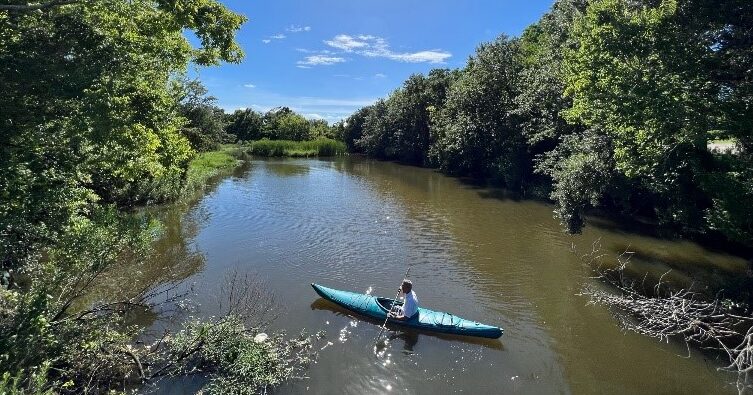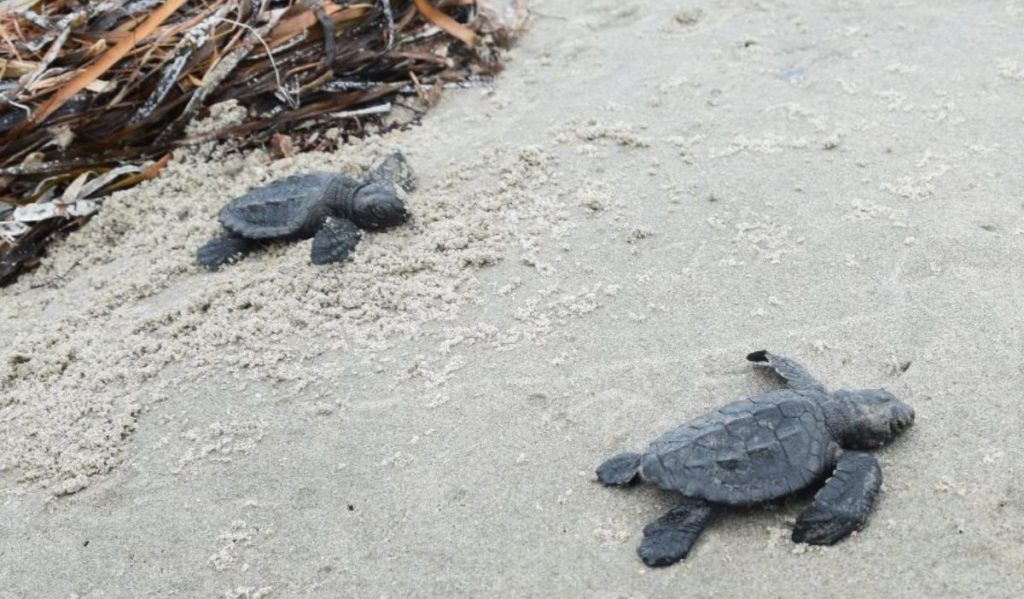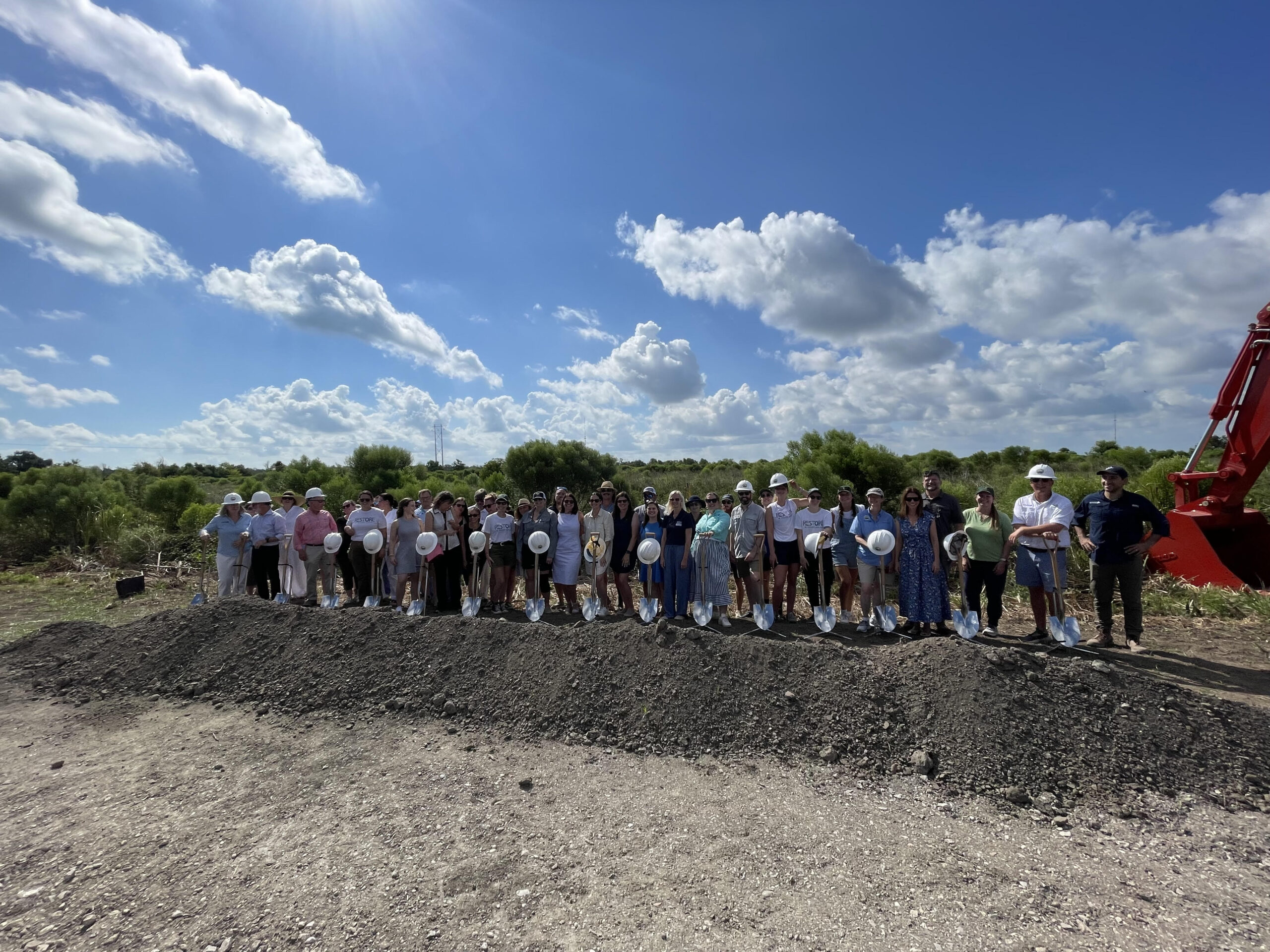We have much more to do and your continued support is needed now more than ever.
Good News from the Gulf
NWF’s Top Successes in 2023

NWF’s Gulf program has made great strides since its beginning over a decade ago, and 2023 was no exception. As we close out this year, join us in celebrating achievements for the people and wildlife of the Gulf.
From helping baby sea turtles find their way, to ensuring funding for Everglades restoration, to debuting a new film on climate resilience in Florida, to ensuring large-scale restoration of the great Mississippi River Delta advances for the people and critters that depend on it…NWF’s Gulf program has had an exciting year!
Here is our year-end countdown of our top five successes in the Gulf region.
5. Groundbreaking Restoration in America’s Everglades
In the heart of the Everglades, groundbreaking began on construction of a critical restoration project, the Everglades Agricultural Area Reservoir. Once built, this reservoir south of Lake Okeechobee will store polluted water from the lake and clean it through a stormwater treatment area. Instead of pumping too much water out to the east and west coasts and causing toxic algae outbreaks, it will allow clean water to be sent south to rehydrate the Everglades and restore the freshwater balance to Florida Bay.
Together with other projects, it will reduce the damaging discharges of Lake Okeechobee water by 55% and will send roughly 370,000 acre-feet of clean water south to the Everglades and Florida Bay each year. This is a massive step forward for Everglades restoration, and our Gulf team has been at the forefront, working with sportsmen, NGOs, and policy-makers, to advocate for securing funding for and expediting the completion of restoration and water infrastructure projects that improve water management across the Everglades and South Florida. We continue to call for Congress to fully fund restoration efforts in the future to continue this momentum and keep Everglades restoration on track.
Read more Everglades restoration success stories here.
4. Dear Tampa Bay Project Gives Insight on Climate Resilience Awareness
Our community engagement project, Dear Tampa Bay, explored how we can help individuals and communities at high-risk to coastal climate impacts to feel empowered to take action for a better future. Our project focused on the Tampa Bay area and analyzed how personal storytelling through film and expert-led field trips resonate and grow awareness of climate change risks and solutions. This research project was funded by the National Academies of Science, Engineering and Medicine and engaged hundreds of community leaders across the region.

Not only did participants show a significant increase of empowerment and ability to effect change in post-viewing surveys, but we also increased their knowledge of the issue overall. After watching the short storytelling film, we saw significant shifts in willingness to participate in climate related activities, including:
- 240% increase in willingness to work with a group to advocate for nature-based infrastructure to absorb storm surge and sea-level rise;
- 214% increase in willingness to work with a group to educate neighbors about the need for climate change policy solutions;
- 149% increase in willingness to learn about city and county resilience initiatives and how to become more involved.
“This project advances our understanding of how innovative communication approaches can increase local leaders’ understanding of climate-related risks and opportunities for resilience, connect people to their local environment in a powerful way, and motivate active citizenship.”
Dr. Rebecca Johns, lead project researcher, University of South Florida
The Dear Tampa Bay short film is an official selection in local and national film festivals! Check it out here, along with other outreach resources and project findings, and share with your community.
3. Habitat Restoration and Protection for Sea Turtles and Manatees Advance from Louisiana to Florida
This year brought big wins for manatees and sea turtles across the Gulf!
For the first time in over 75 years, sea turtle nests and hatchlings were seen on Louisiana’s Chandeleur Islands in the Breton National Wildlife Refuge. The hatchlings on these barrier islands were the endangered Kemp’s ridley turtles, the world’s smallest sea turtle. Kemp’s ridleys nest almost exclusively along beaches in the Gulf of Mexico, but no nests have been documented on the Chandeleur Islands since 1947. Our NWF Gulf restoration team has long advocated for restoring and protecting Louisiana’s barrier islands, including the Chandeleurs, knowing that these wild places are so important for a variety of wildlife, including sea turtles. NWF continues to advocate for restoration of these islands and work with state agency partners who are doing on-the-ground studies of the turtle activity.

Over in Florida, for thousands of federally-protected adult and hatchling sea turtles, problematic coastal lighting along the state causes disorientation away from the ocean. In 2023, NWF joined forces with the Sea Turtle Conservancy to support local lighting ordinance updates in three counties along Florida’s Gulf Coast. This collaborative effort will enhance sea turtle nesting habitat and increase protections for these remarkable marine animals.
Want to help? Check out our new website where you can assess your local lighting ordinances to ensure better outcomes for sea turtles in their areas.
NWF’s Manatee Outreach Team engaged with more than 900 community members this year via our Panhandle Manatee program. In light of the rising number of manatee sightings in the Pensacola and Perdido Bay Watershed, this program’s primary objective is to boost awareness concerning manatees, their natural habitats, protective measures, and the process for reporting sightings.
Finally, in southwest Florida’s Warm Mineral Springs Creek and Salt Creek, NWF’s Gulf Program worked to restore critical habitats for manatees by advancing a $3.8 million-dollar project to restore 6 acres of creeks through bank stabilization and dredging sediment from the creek bottom to enhance and expand manatee habitat. The restoration efforts also improve water quality and protect seagrass beds, which help manatees thrive by ensuring their access to the important natural warm-water refuges in the area.
2. Making Big Plans for a Safer Louisiana
Coastal Louisiana loses a football field of wetlands every 100 minutes, jeopardizing globally significant wildlife habitat and putting communities at risk. Thankfully 2023 saw major strides in planning for restoration and resilience in Sportsman’s Paradise.
The passage of Louisiana’s 2023 Coastal Master Plan positioned the state to continue its leadership on climate change resilience and adaptation. The plan is a $50 billion, 50-year comprehensive blueprint first adopted in 2007 and updated every six years to reflect the latest science and evolving needs of vulnerable coastal communities. It pairs world-class science and technical expertise with insight from coastal communities to shape a brighter future for the people and wildlife that depend on coastal Louisiana.
The plan sets the national standard for thoughtful coastal management and should serve as a model for coastal areas across the country confronting impacts from challenges like stronger storms and rising seas. NWF is proud to have advised on the formulation of the 2023 Coastal Master Plan and to provide leadership on coastal community outreach to ensure the plan is widely informed and understood by those who depend on it.
In the greater New Orleans region, we continued to see progress on our work in the affected Mississippi River Gulf Outlet (MRGO) area. NWF leads a long-standing coalition of 19 organizations which advocate for large-scale ecosystem restoration in the 1 million acres area of coastal habitat impacted by the MRGO shipping channel. In the last year, more than 17 years after MRGO contributed to catastrophic flooding during Hurricane Katrina, Congress clarified its original intent – to fully and federally fund implementation of the MRGO Ecosystem Restoration Plan. With this hard-won clarification, we can build upon our past achievements in habitat restoration and continue forward on critical recovery that impacted communities justly deserve.
2023 saw a notable new step forward for the adoption of clean energy technology with the first offshore wind lease sale in the Gulf of Mexico off of Louisiana’s coast. A winning $5.6 million bid will potentially bring hundreds of jobs to the area while providing enough power for 435,000 homes with clean, non-polluting sources of energy. NWF worked closely with the Bureau of Ocean Energy Management throughout the process, seeking to avoid wildlife impacts, and looks forward to continuing to shape responsible development in the future. Looking ahead, we are eager to collaborate with decisionmakers in Louisiana and Texas to establish policies that foster the growth of this industry and leveraging its economic potential for the region, while keeping wildlife safe.
1. Building Land in the Mississippi River Delta
This year, we celebrated huge milestones in turning the tide on Louisiana’s land loss crisis.
Neptune Pass is a natural crevasse in the Mississippi River in Louisiana’s Plaquemines Parish, depositing sediment into nearby Quarantine Bay and building new land. Despite the Army Corps’ initial plans for closure due to navigation impacts, NWF’s close monitoring and ongoing advocacy for Neptune Pass helped to keep the waterway open. Neptune Pass is a rare occurrence in Louisiana, a place actually gaining land against the odds, and it’s all due to fresh water and sediment from the river. This is a great example of how we can manage the Mississippi River for both navigation and restoration needs.
Our top success for 2023 is the groundbreaking for Louisiana’s Mid-Barataria Sediment Diversion, the largest single ecosystem restoration project in U.S. history and a monumental milestone decades in the making. The project will reconnect the Mississippi River to its surrounding wetlands, mimicking natural land-building processes, and is predicted to restore up to 27 square miles (17,000 acres) of wetlands in the Barataria Basin. The diversion is designed to work with other restoration projects in the outfall area, creating the potential for enhancing hundreds of acres of restored wetlands in total.

Through science, policy, and outreach, NWF’s Gulf program has worked for decades to advance large-scale sediment diversions as the most effective way to rebuild the Mississippi River Delta, creating vital habitat for wildlife and a crucial buffer for coastal communities against increasing threats from rising sea levels and storm surge. We hope other regions can draw inspiration from this innovative nature-based solution to create a more resilient future for generations to come.
Partnerships are at the heart of all of our work! Thank you for your continued support in 2023. We look forward to more good news for the communities and wildlife of the Gulf Coast in the new year!





















